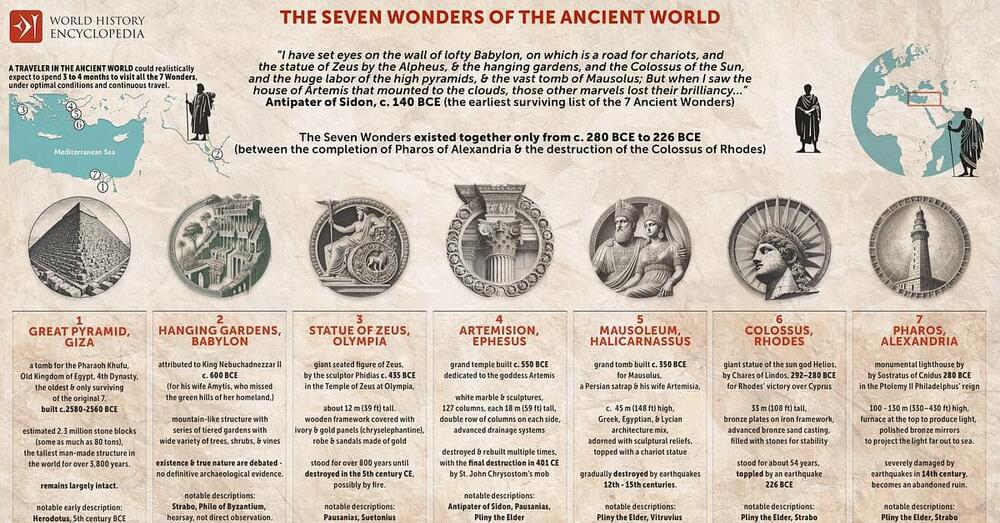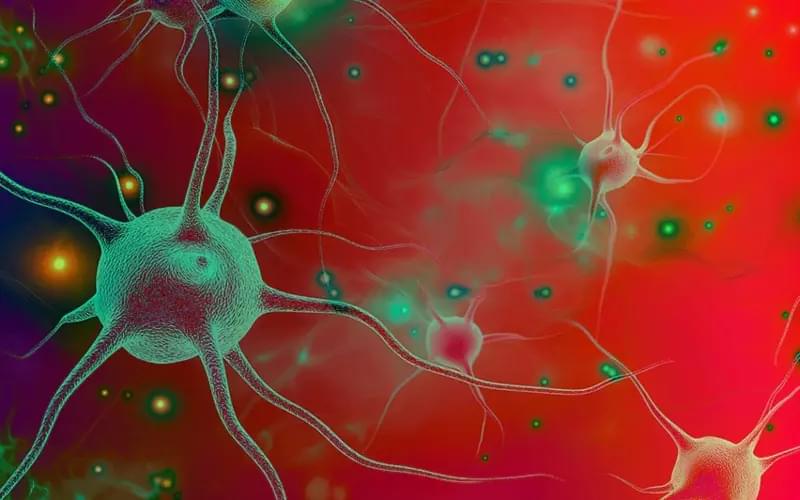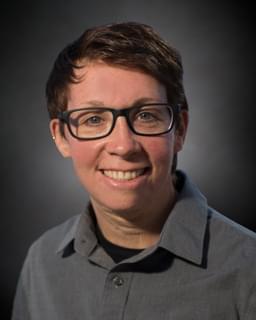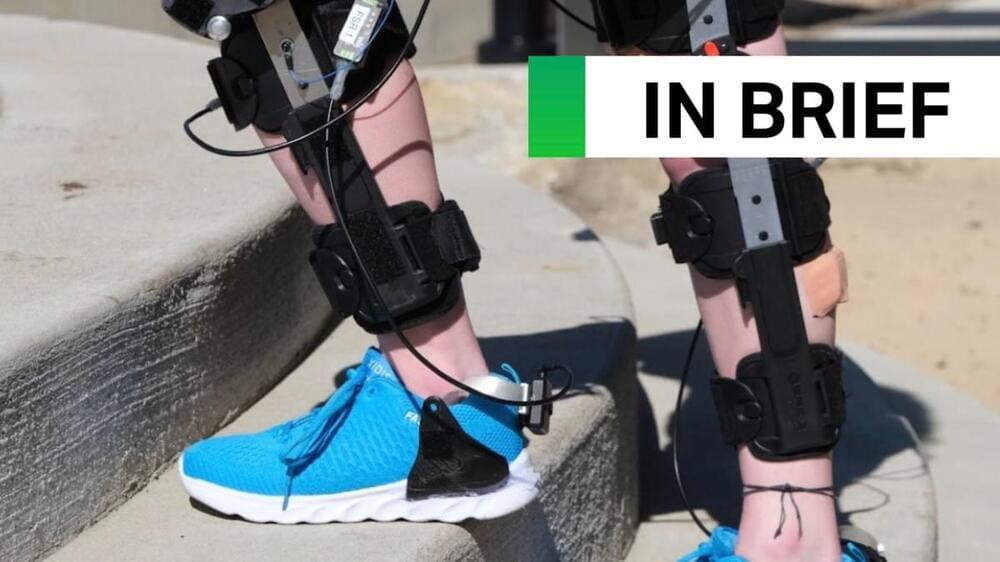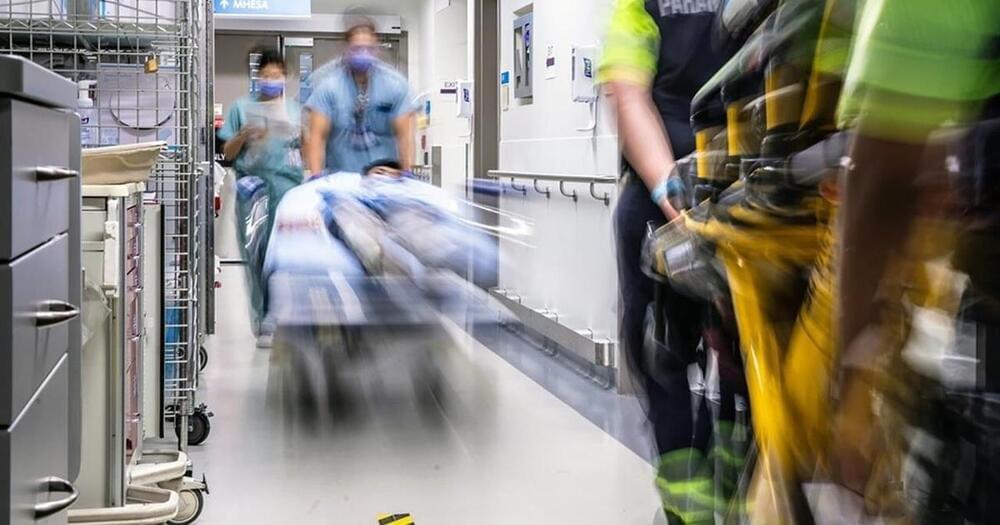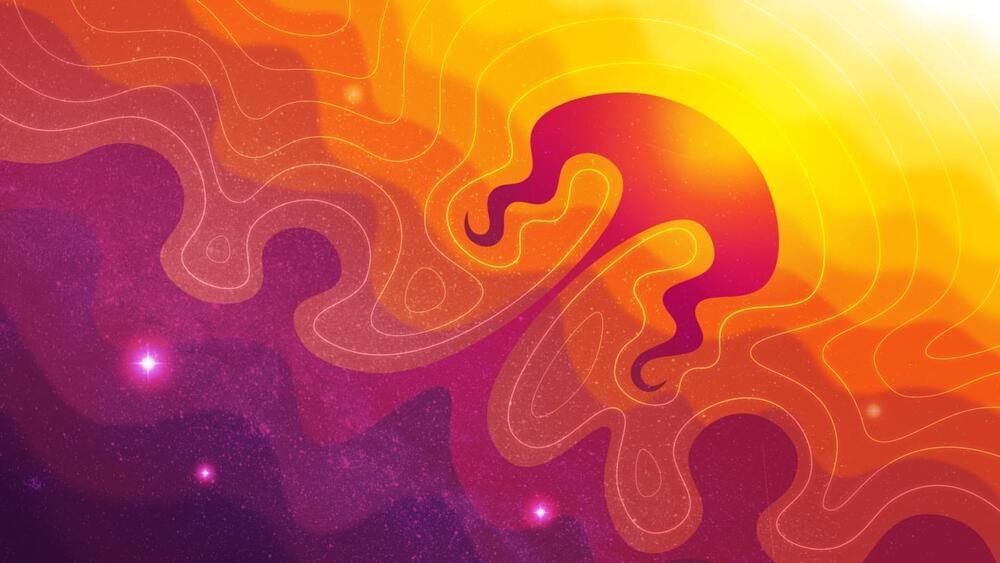An infographic about the Seven Wonders of the Ancient World — extraordinary architectural and artistic achievements celebrated for their grandeur and innovation. The wonders included the Great Pyramid of Giza, the only surviving wonder, which served as a monumental tomb for the Egyptian Pharaoh Khufu. Although the Hanging Gardens of Babylon’s actual existence and location is debated, they were described as a lush, terraced paradise built in ancient Babylon. The Statue of Zeus at Olympia was a massive gold and ivory representation of the Greek god Zeus, crafted by the sculptor Phidias. The Temple of Artemis at Ephesus was a magnificent sanctuary dedicated to the goddess Artemis, famed for its scale and intricate decoration. The Mausoleum at Halicarnassus was an elaborate tomb for Mausolus, a Persian satrap renowned for its architectural splendor and sculptural detail.
Page 196
Sep 22, 2024
Quantum collapse holds the key to consciousness
Posted by Dan Breeden in categories: neuroscience, quantum physics
Consciousness is famously unobservable. Therefore, to test for consciousness, we must study its absence rather than its presence. Stuart Hameroff here argues that by studying anesthesia we are able to understand what goes away in the brain when the light of consciousness is switched off. Hameroff finds the answer in quantum processes in the brain – recent studies suggest he is onto something.
This article is presented in association with Closer To Truth, a partner for HowTheLightGetsIn Festival 2024. The festival will feature the debate ‘The Consciousness Test’, featuring Sabine Hossenfelder, Yoshua Bengio, Nick Lane and Hilary Lawson.
Sep 22, 2024
Multicellular artificial neural network-type architectures demonstrate computational problem solving
Posted by Dan Breeden in category: robotics/AI
A modular multicellular system has been created by mixing and matching discrete engineered bacterial cells in an artificial neural network-type architecture. The system is capable of solving multiple computational decision problems like identifying a number as prime and a letter as a vowel.
Sep 22, 2024
Penn State barred embattled professor from doing research
Posted by Dan Breeden in categories: biotech/medical, law
The Pennsylvania State University in May blocked a prominent professor at the school from doing research and making presentations on its behalf, Retraction Watch has learned.
The professor, Deborah Kelly, has faced mounting scrutiny over her work since a researcher in the United Kingdom noticed apparent data manipulation in a now-retracted article she published in 2017. Kelly earned her third retraction last week following a university probe that found “serious data integrity concerns” in another paper, as we reported at the time.
In comments she made via her legal counsel for that story, Kelly, a biomedical engineer and an expert in electron microscopy, told us:
Long overlooked by biographers, Albert Einstein’s time at Oxford—and his reasons for leaving—are worth revisiting, argues a new #ScienceBooks essay.
Sep 22, 2024
This robotic knee exoskeleton is made from consumer braces and drone motors
Posted by Shailesh Prasad in categories: cyborgs, drones, robotics/AI
Robotic exoskeletons are an increasingly popular method for assisting human labor in the workplace. Those that specifically support the back, however, can result in bad lifting form by the wearer. To combat this, researchers at the University of Michigan have built a pair of robot knee exoskeletons, using commercially available drone motors and knee braces.
“Rather than directly bracing the back and giving up on proper lifting form,” U-M professor Robert Gregg notes, “we strengthen the legs to maintain it.”
Test subjects were required to move a 30-pound kettlebell up and down a flight of stairs. Researchers note that the tech helped them maintain good lifting form, while lifting more quickly.
Sep 22, 2024
AI ‘early warning’ system shows promise in preventing hospital deaths, study says
Posted by Dan Kummer in categories: biotech/medical, robotics/AI
The study, published Monday in the Canadian Medical Association Journal, found a 26 per cent reduction in non-palliative deaths among patients in St. Michael’s Hospital’s general internal medicine unit when the AI tool was used.
“We’ve seen that there is a lot of hype and excitement around artificial intelligence in medicine. We’ve also seen not as much actual deployment of these tools in real clinical environments,” said lead author Dr. Amol Verma, a general internal medicine specialist and scientist at the hospital in Toronto.
Sep 22, 2024
Bubbling, frothing and sloshing: Long-Hypothesized Plasma Instabilities Finally Observed
Posted by Natalie Chan in categories: cosmology, nuclear energy, particle physics
Results could aid understanding of how black holes produce vast intergalactic jets. Scientists have observed new details of how plasma interacts with magnetic fields, potentially providing insight into the formation of enormous plasma jets that stretch between the stars.
Whether between galaxies or within doughnut-shaped fusion devices known as tokamaks, the electrically charged fourth state of matter known as plasma regularly encounters powerful magnetic fields, changing shape and sloshing in space. Now, a new measurement technique using protons, subatomic particles that form the nuclei of atoms, has captured details of this sloshing for the first time, potentially providing insight into the formation of enormous plasma jets that stretch between the stars.
Scientists at the U.S. Department of Energy’s (DOE) Princeton Plasma Physics Laboratory (PPPL) created detailed pictures of a magnetic field bending outward because of the pressure created by expanding plasma. As the plasma pushed on the magnetic field, bubbling and frothing known as magneto-Rayleigh Taylor instabilities arose at the boundaries, creating structures resembling columns and mushrooms.
Sep 22, 2024
Research cracks the Autism Code, making the Neurodivergent Brain Visible
Posted by Natalie Chan in categories: biotech/medical, genetics, mathematics, neuroscience
Model grounded in biology reveals the tissue structures linked to the disorder. A researcher’s mathematical modeling approach for brain imaging analysis reveals links between genes, brain structure and autism.
A multi-university research team co-led by University of Virginia engineering professor Gustavo K. Rohde has developed a system that can spot genetic markers of autism in brain images with 89 to 95% accuracy.
Their findings suggest doctors may one day see, classify and treat autism and related neurological conditions with this method, without having to rely on, or wait for, behavioral cues. And that means this truly personalized medicine could result in earlier interventions.
Sep 22, 2024
Three Mile Island reactor to provide power for Microsoft data centers
Posted by Chima Wisdom in categories: climatology, computing, nuclear energy, sustainability

HARRISBURG, Pa. — The owner of the shuttered Three Mile Island nuclear power plant said Friday that it plans to restart the reactor under a 20-year agreement that calls for tech giant Microsoft to buy the power to supply its data centers with carbon-free energy.
The announcement by Constellation Energy comes five years after its then-parent company, Exelon, shut down the plant, saying it was losing money and that Pennsylvania lawmakers had refused to bail it out.
Continue reading “Three Mile Island reactor to provide power for Microsoft data centers” »
